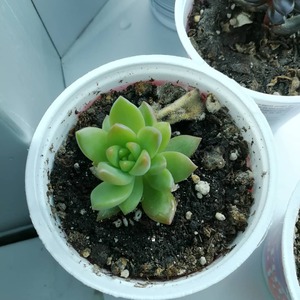Posts (269)
格桑花
2023-10-29

The Power of Habit
At the foundation of every successful individual lies a series of habits, meticulously cultivated and consistently practiced. These habits, when integrated into one's daily life, act as pillars that support personal and professional growth. Beyond mere routines, they shape behaviors, influence decisions, and drive a person's trajectory towards success.Proactivity: Taking Control
One of the most notable characteristics of highly effective people is their proactivity. Instead of reacting to events, they anticipate them. They plan, prepare, and make decisions based on long-term goals rather than immediate concerns. This proactive mindset empowers them to seize opportunities, address challenges head-on, and take responsibility for their outcomes.Goal-Setting: The Visionary Approach
Effective individuals are not just dreamers; they're doers. They have a clear vision of what they want to achieve, and they set precise, measurable, achievable, relevant, and time-bound (SMART) goals. By continuously assessing and refining these objectives, they ensure that they remain on a course that aligns with their overarching vision.Prioritization: Focusing on What Matters
Time is a finite resource, and its effective management is pivotal. Successful people prioritize tasks based on importance rather than urgency. By focusing on high-impact activities and delegating or eliminating low-value tasks, they ensure optimal productivity and value creation.Continuous Learning: The Path to Mastery
The rapidly evolving world demands adaptability and continuous learning. Highly effective individuals remain students throughout their lives. They seek knowledge, embrace new technologies, and remain curious about the world around them. This lifelong learning approach ensures they stay relevant and ahead of the curve in their respective fields.Empathy: Building Meaningful Relationships
Beyond hard skills and knowledge, effective people understand the importance of building and nurturing relationships. They practice empathy, actively listen to others, and cultivate trust. This emotional intelligence not only enriches their personal relationships but also fosters collaboration and teamwork in professional settings.Self-Care: The Foundation of All Success
Amidst their busy schedules, successful individuals never overlook the importance of self-care. They recognize that mental, physical, and emotional well-being is the bedrock of all achievement. Regular exercise, a balanced diet, adequate sleep, and mindfulness practices are staples in their routines.Resilience: Thriving Amidst Challenges
The path to success is rarely linear. It's fraught with challenges, setbacks, and failures. However, what sets effective individuals apart is their resilience. They perceive failures as learning opportunities, setbacks as temporary, and challenges as chances to grow. This unwavering spirit ensures they remain undeterred in their pursuit of success.
Article
格桑花
2023-10-29

Understanding Comfort Zones
Comfort zones, by their very definition, represent spaces of routine and familiarity. It's where our actions, thoughts, and behaviors fit a pattern that minimizes stress and risk. Here, in this haven, predictability reigns, and while that offers emotional security, it also serves as a potential trap, stifling growth. Over time, staying too snugly within our comfort zones can lead to stagnation, missed opportunities, and a muted sense of life's vibrancy.The Paradox of Discomfort
Counterintuitively, discomfort is a precursor to growth. Just as muscles need to be stressed to grow stronger, our psychological and emotional faculties develop resilience and adaptability when pushed beyond familiar limits. Each time we confront and embrace discomfort, we expand our boundaries, learn new lessons, and cultivate resilience. This process paves the way for personal development, building confidence, and fostering a mindset conducive to continuous learning.Risks and Rewards
Stepping outside one's comfort zone inherently carries risks. There's the risk of failure, facing criticism, or even just the unease of the unfamiliar. However, by not taking these risks, we also forego the rewards that come from new experiences—whether it's the thrill of a new adventure, the satisfaction of a newly acquired skill, or the broadened perspective from exposing ourselves to diverse cultures, ideas, or environments.Practical Steps to Embrace Challenge
Begin by acknowledging fears and hesitations; understanding them is the first step in addressing them. Next, set small, achievable goals that slightly stretch current capacities. It could be as simple as striking up a conversation with a stranger, taking a new class, or traveling to an unfamiliar destination. Celebrate each achievement, no matter how minor, and use it as a stepping stone for larger challenges. Over time, these incremental steps can lead to profound changes in mindset and capability.The Lifelong Journey
Embracing discomfort and challenging one's comfort zone is not a one-off act but a lifelong journey. As we evolve, so do our boundaries and comfort zones. What seems daunting today might become second nature tomorrow. The key lies in maintaining a spirit of curiosity, a willingness to face the unknown, and understanding that every challenge, failure, or setback is but a stepping stone on the path to personal growth and enlightenment.Word count: 1505
Article
格桑花
2023-10-29

Value of Time
Time, an intangible yet omnipresent force, governs our daily lives, influencing our decisions, actions, and inactions. While each day gifts us an equal allotment of hours, it's the discerning use of this time that separates the highly productive from the perpetually busy. Acknowledging the value of each second, minute, and hour is the foundational step in any time management journey. When time is perceived as a precious resource, a shift occurs, redirecting focus from merely staying active to delivering tangible results and enhancing personal development.Productivity Tools
In a world awash with distractions, staying on task requires more than just willpower. Employing the right tools and techniques can be game-changing. The Pomodoro Technique, for instance, breaks tasks into focused intervals with short breaks in between, optimizing concentration. Digital apps like Trello or Asana can streamline task management, providing clarity and structure. Yet, it's crucial to remember that tools are only as effective as the user's commitment to them. Regularly reviewing and adjusting one's chosen methods ensures that they remain relevant and impactful.Time and Self-Growth
Beyond mere productivity, effective time management directly feeds into personal development. By carving out dedicated periods for self-reflection, learning, and skill acquisition, individuals can consistently progress toward their goals. Whether it's setting aside an hour for reading, enrolling in a weekend workshop, or dedicating mornings to meditation, these deliberate allocations of time compound, culminating in personal evolution.The Multitasking Myth
The allure of multitasking, while tempting, often dilutes the quality of work and extends completion times. Shifting the mindset from juggling multiple tasks to deeply focusing on one task at a time can drastically enhance both efficiency and the quality of output. This mono-tasking approach, backed by numerous studies, highlights the brain's capacity for deep work, yielding better results in less time.Boundaries and Breaks
While maximizing each moment is a worthy endeavor, it's equally vital to recognize the need for pauses and boundaries. Setting clear start and end times for specific tasks prevents burnout and maintains a consistent performance level. Additionally, integrating regular breaks, whether for a short walk, a moment of mindfulness, or a quick snack, rejuvenates the mind and body, ensuring sustained productivity throughout the day.Embracing the Journey
Mastering time is less about rigid adherence to a set of rules and more about understanding one's rhythms, strengths, and areas of improvement. It's a dynamic process, evolving with life's changing phases and priorities. By staying adaptable, being forgiving of oneself during missteps, and celebrating small victories, the journey to mastering time becomes not just a means to an end but an enriching experience in itself.
Article
格桑花
2023-10-29

The Ancient Practice of Self-Documentation
Journaling, a practice as old as written language itself, has long been a refuge for those seeking to understand their innermost thoughts and feelings. From the meticulous diaries of historic figures to the digital journals of today, this method of self-documentation offers a window into one's mind and soul. Historians and biographers treasure journals as they reveal the intricate nuances of personal experiences. For the individual, the act of journaling transcends mere record-keeping; it becomes a therapeutic conduit for introspection, growth, and personal evolution.Therapeutic Benefits: Unburdening the Mental Load
The act of putting pen to paper, or fingers to keyboard, serves as a release valve for pent-up emotions, fears, aspirations, and dreams. As thoughts flow out, the mental clutter starts to clear, revealing patterns, repeated pitfalls, and recurring joys. Many therapists advocate journaling as an adjunct to therapy, observing that clients who journal often achieve quicker breakthroughs. The very act of externalizing thoughts can sometimes reframe problems, making them seem more solvable or, at the very least, more understandable.The Power of Reflection: From Reaction to Response
By consistently documenting daily experiences and reactions, individuals can trace the triggers of certain behaviors or emotional responses. This tracking helps in moving from a reactive mindset, where one might feel constantly buffeted by external events, to a responsive one. With insight comes the power to choose one's responses, leading to more intentional and empowered interactions with the world. Over time, journaling fosters a heightened sense of self-awareness, allowing for more mindful, deliberate choices in daily life.Cultivating Creativity: The Unfettered Realm of Possibility
Apart from its therapeutic and reflective benefits, journaling can be a catalyst for creativity. Without the constraints of structured thinking or the pressure of judgment, journaling provides a safe space for free expression. Creative ideas, often stifled in the cacophony of daily life, find their voice in the solitude of a journal. Writers, artists, and innovators have long used journals as brainstorming tools, finding that their best ideas often emerge from these unfiltered scribbles.Getting Started: Making Journaling a Habit
While the benefits of journaling are manifold, consistently maintaining a journal can be challenging. Starting with a dedicated time each day, even if it's just a few minutes, can help build the habit. Some find prompts helpful, while others prefer open-ended reflection. Digital tools and apps have made journaling more accessible, but for many, the tactile experience of writing in a physical book is irreplaceable. Regardless of the medium, the key is consistency and honesty in expressing oneself.Final Thoughts
At its core, journaling is a deeply personal journey, an ongoing dialogue with oneself. Whether one seeks therapeutic relief, heightened self-awareness, or a spark of creativity, the pages of a journal offer a welcoming canvas. As individuals delve into the art of self-reflection through journaling, they often find that they're not just documenting life, but actively shaping it, crafting a narrative of growth, understanding, and transformation.
Article
格桑花
2023-10-29

The Intricate Web of Passions and Purpose
In today's bustling world, many individuals find themselves adrift in the currents of life, often feeling disconnected from their core desires and passions. The notion of a 'true calling' is not just a whimsical idea; it's deeply intertwined with our sense of purpose, happiness, and overall well-being. A life led without acknowledging one's passion often feels incomplete or unfulfilled. While the idea of passion evokes strong, fiery emotions, its discovery is typically a more nuanced and introspective journey.Self-Reflection: The Mirror to Your Soul
One of the most profound ways to discover one's passion is through deep self-reflection. Taking time away from the daily hustle and grind, intentionally pausing to reflect on moments when you felt most alive, can be enlightening. It requires a genuine willingness to ask oneself challenging questions: What activities make my heart race? When do I feel most authentically 'me'? What dreams did I harbor as a child? These questions serve as guideposts, directing individuals towards the activities and pursuits that resonate most deeply with their core.Exploration and Curiosity: Venturing Beyond Familiar Horizons
While introspection can illuminate certain paths, actively exploring new experiences often reveals unexpected passions. This exploration could be as straightforward as picking up a new hobby, attending workshops, or traveling to unfamiliar places. Actively seeking out and embracing novel experiences helps in breaking the monotony and can unearth interests or skills previously unrecognized. A latent love for photography, an undiscovered talent for music, or a deep-seated desire to help others through community service may emerge when we allow ourselves the freedom to venture beyond the known.Aligning Passion with Profession: A Fulfilling Endeavor
Discovering a passion is rejuvenating, but integrating it into one's daily life and, possibly, profession, is transformative. This alignment doesn't necessarily mean turning a hobby into a career. Instead, it involves seeking avenues where underlying skills or values associated with one's passion find relevance. For instance, someone passionate about storytelling might not become an author but could thrive in marketing, teaching, or any profession requiring compelling communication.Overcoming Doubts and Fears: The Roadblocks to Passion's Pursuit
Identifying a passion is just the first step. Pursuing it often brings up deeply rooted fears and doubts. The fear of failure, judgment, or even success can deter individuals from taking meaningful steps toward their true calling. It's vital to recognize these fears as mere mental constructs, not reality. Seeking support, setting small goals, and celebrating milestones can gradually build confidence in one's path. Over time, the initial hesitations give way to a firm, unwavering commitment to one's passion and purpose.In Conclusion
Finding one's true calling is more of a journey than a destination. It requires a balance of introspection, exploration, and resilience. As individuals embark on this quest to unearth their passion, they not only discover more about themselves but also enrich their lives in unimaginable ways. A life led with passion is a life filled with vibrancy, purpose, and profound satisfaction.
Article
格桑花
2023-10-29

The Foundation: What is a Growth Mindset?
At the intersection of psychology and self-improvement lies a potent concept: the growth mindset. Introduced by Carol Dweck, it is the belief that abilities and intelligence can evolve through effort and dedication. In contrast, a fixed mindset holds that such traits are innate and unchangeable. This fundamental difference in perception can shape our reactions to challenges, successes, and failures.Dangers of a Static Perspective: The Fixed Mindset
When constrained by a fixed mindset, individuals often shy away from challenges, fearing failures which they perceive as a reflection of their inherent limitations. Such a mindset results in a reluctance to try new things, a resistance to change, and a general stagnation in personal and professional growth.Identifying the Chains: Recognizing Limiting Beliefs
Before we can break free, we must recognize what binds us. Limiting beliefs are self-imposed narratives that restrict potential. These thoughts whisper that success is beyond reach or that one's efforts are in vain. Identifying such beliefs is the crucial first step towards replacing them with empowering, growth-oriented perspectives.Reframing Failures: Learning from Mistakes
An integral aspect of adopting a growth mindset is seeing setbacks not as setbacks at all, but as stepping stones. Mistakes become invaluable lessons, teaching resilience, innovation, and adaptability. They are not final, merely formative.Tools for Transformation: Nurturing a Growth Mindset
While recognizing the need for change is crucial, it's equally important to actively foster a growth mindset. Activities like journaling one's journey, practicing mindfulness, and consistently challenging and countering negative self-talk can cultivate a positive outlook. Furthermore, setting tangible goals, being open to feedback, and committing to continuous learning all contribute to nurturing this transformative mindset.The Power of Positivity: Embracing Affirmations
Affirmations act as mental anchors, rooting the mind in positivity. Regularly repeating statements like "Growth is within my control" or "Every challenge offers a lesson" can significantly influence mindset. Over time, these affirmations can help replace negative thought patterns with optimistic, growth-focused ones.Choosing Your Tribe: The Importance of Surroundings
People are, to a significant extent, a product of their environment. By consciously choosing to associate with growth-minded individuals, we can find motivation, inspiration, and support. Such companions push us beyond our perceived limits, offering constructive criticism and celebrating our progress.Valuing the Journey: Progress Over Perfection
A growth mindset recognizes the value of the journey. Every step, no matter how small, is a testament to effort, dedication, and progress. Celebrating these milestones, rather than fixating solely on the end goal, creates a positive feedback loop, encouraging continued effort and growth.Never Ending Growth: Commitment to Lifelong Learning
At the heart of the growth mindset is an unquenchable thirst for knowledge. This isn't confined to formal education; it's a holistic approach. By reading, exploring new hobbies, or attending workshops, one can consistently feed this desire for growth and understanding.In Conclusion
A growth mindset, when genuinely embraced, offers more than a mere change in outlook. It paves the path for continuous self-improvement, breaking barriers of self-imposed limitations. By choosing growth over stagnation, we not only evolve as individuals but also enrich the world around us with our unique contributions.
Article
格桑花
2023-10-29

Introduction
In the landscape of personal development, setting clear intentions stands as a foundational pillar. Rather than letting life's waves dictate our direction, setting intentions allows us to actively chart our course, turning aspirations into tangible achievements.1. The Power of Intention
An intention is more than just a goal or a resolution. It's a guiding principle for how we want to live, act, and evolve. Rooted in our deepest desires, intentions resonate with our core values, ensuring alignment between our actions and beliefs.2. The Difference Between Intentions and Goals
While goals are specific, measurable objectives we aim to achieve, intentions are broader in scope, emphasizing the journey rather than the destination. For instance, while a goal might be to lose ten pounds, an intention might focus on leading a healthier lifestyle.3. Crafting Your Intention Statement
A powerful intention statement is clear, positive, and present-tense. Instead of saying, "I don't want to be stressed," an intention might be, "I embrace calm and serenity in my daily life." This shift in language propels positive action.4. Visualization: Seeing Your Intentions Come to Life
Visualization is a potent tool in manifesting intentions. By creating a vivid mental picture of our desires, we forge a deeper connection, making our aspirations feel more tangible and achievable.5. Intentional Rituals: Daily Practices for Alignment
Establishing daily rituals—like meditation, journaling, or intention setting—can help reinforce and realign with our intentions. These practices create consistency, bridging the gap between intention and action.6. Accountability and Sharing Your Intentions
Sharing intentions with trusted friends or community members can provide added motivation. It creates a sense of accountability, encouraging us to remain committed even during challenging times.7. Embracing Flexibility: Adjusting Intentions as You Grow
As we evolve, our intentions may shift to reflect our changing desires and circumstances. Embracing this flexibility ensures our intentions remain relevant and continue to serve our growth.8. Overcoming Challenges and Staying Committed
Challenges are an inherent part of any journey. When faced with obstacles, reconnecting with the 'why' behind our intentions can reignite passion and commitment, driving us forward.9. Celebrating Small Wins Along the Way
While intentions focus on the journey, celebrating milestones and achievements fosters motivation. Each small win brings us one step closer to realizing our broader intentions.10. The Ripple Effect of Personal Intentions
As we set and work towards our intentions, we inspire others to do the same. This ripple effect can influence communities, creating collective growth and evolution.Conclusion
Setting intentions is a transformative practice, steering us towards a life of purpose and fulfillment. By crafting clear intention statements, embracing daily rituals, and remaining committed even in the face of adversity, we can manifest our personal growth goals and elevate our life's journey.
Article
格桑花
2023-10-29

Introduction
In an ever-evolving world, change is the only constant. Embracing change, rather than resisting it, can be a powerful catalyst for personal growth and evolution. While it's natural to feel discomfort in the face of change, harnessing its potential can lead to transformative life experiences.1. Understanding the Nature of Change
Change is an inevitable aspect of life. From the shifting seasons to the evolving landscapes of our personal and professional lives, change is ubiquitous. Recognizing change as a natural, and often beneficial, force can help us approach it with an open mind.2. The Comfort Zone Conundrum
Our comfort zones, though cozy and familiar, can be limiting. Venturing beyond these confines exposes us to new experiences, ideas, and perspectives that can stimulate personal growth and broaden our horizons.3. Growth Mindset: A Catalyst for Embracing Change
Cultivating a growth mindset, as coined by Dr. Carol Dweck, entails viewing challenges as opportunities for growth. By adopting this mindset, we become more adaptable and open to the transformative power of change.4. Change as a Tool for Self-Discovery
Every change, whether chosen or thrust upon us, offers a chance for introspection and self-discovery. It provides a mirror, reflecting aspects of ourselves that may have remained hidden in static environments.5. Building Resilience in the Face of Uncertainty
Change often brings with it a degree of uncertainty. By building resilience, we equip ourselves to navigate this uncertainty, finding stability even when the ground beneath us seems to shift.6. Strategies for Embracing Change
Active strategies, such as setting clear goals, seeking support, and practicing mindfulness, can help us navigate change with grace and poise. It's about proactive adaptation, not just passive acceptance.7. The Ripple Effects of Change
Embracing personal change can have a ripple effect, influencing our relationships, communities, and even broader societal structures. Personal evolution can lead to collective transformation.8. Celebrating the Evolution
While the journey through change can be challenging, it's essential to celebrate the milestones and growth achieved along the way. These moments of recognition can reinforce our commitment to personal evolution.9. The Lifelong Journey of Adaptation
Embracing change is not a one-time event but a continuous journey. As we evolve, so do our perceptions, ambitions, and the world around us. Remaining adaptable ensures we continue to grow throughout life.Conclusion
Embracing change is more than just a survival tactic; it's a strategy for thriving. By unlocking the doors to personal evolution, we open ourselves up to a world of possibilities, growth, and profound transformation. As we navigate the ebb and flow of life, it's the embrace of change that ensures we continue to evolve, learn, and enrich our existence.
Article
格桑花
2023-10-29

Introduction
Breakups, irrespective of the circumstances, can be emotionally devastating. Yet, with every end comes a new beginning. This journey from heartbreak to healing, though challenging, is a testament to human resilience and the heart's ability to mend. Let's explore the steps to navigate this tumultuous journey and emerge stronger.1. Accepting the Reality
Denial is a common first reaction post-breakup. It’s essential to accept that the relationship has ended. This acceptance is the starting point for healing. It’s not about admitting defeat but recognizing a new starting point for personal growth.2. Allowing Yourself to Grieve
Suppressing emotions can be detrimental. It's natural to feel a spectrum of emotions, from anger to sadness, after a breakup. By allowing yourself to grieve, you're respecting your feelings, acknowledging the relationship's significance, and beginning the healing process.3. Seeking Support Systems
Lean on family, friends, or support groups during these trying times. Sharing your feelings and experiences can provide relief and a fresh perspective. Remember, it's okay to seek professional help if you find it challenging to cope.4. Self-care and Healing
It's crucial to prioritize self-care after a breakup. Engage in activities that bring you joy, such as reading, exercising, or learning something new. Meditation and mindfulness can also be potent tools for emotional healing.5. Avoiding the Blame Game
Refrain from self-blame or resentment towards your ex-partner. Relationships end for myriad reasons, and often it’s a combination of factors. Accepting that things didn't work out, without getting ensnared in the blame game, paves the way for emotional liberation.6. Redefining Your Identity
After a breakup, you have the opportunity to rediscover and redefine yourself. Pursue passions that you might have sidelined, set new goals, and embrace this phase as a chance for self-reinvention.7. Embracing Solitude
There's a profound difference between loneliness and solitude. Embrace being alone, valuing your own company, and indulging in introspection. This solitude can be a fertile ground for personal growth and understanding.8. Setting Boundaries
Establish clear boundaries when it comes to interactions with your ex-partner. This might mean taking a break from seeing each other or limiting conversations. Boundaries can provide the emotional distance needed to heal.9. Learning and Growing
Every relationship teaches us something. Reflect on the lessons learned, both good and bad, and use them to grow. These insights can guide future relationships and personal development.10. Moving On and Opening Up
Healing doesn't mean forgetting. It means remembering without pain. With time, consider opening up to new experiences and relationships. Life, with its myriad possibilities, awaits.Conclusion
While heartbreak can feel insurmountable, the human spirit's resilience is unparalleled. Each step on the journey from heartbreak to healing takes us closer to rediscovering our inner strength and joy. Remember, it's not about moving on, but moving forward with grace, understanding, and hope.
Article
格桑花
2023-10-29

Introduction
In an increasingly digitized and fast-paced world, authentic human connections can seem fleeting. Amidst this whirlwind, empathy stands out as a beacon, anchoring relationships and deepening emotional ties. It transcends mere understanding, allowing individuals to feel with another, not just for them. Let's delve into the intricate role empathy plays in forging profound emotional connections.1. The Essence of Empathy
Empathy is the ability to understand and share the feelings of another. It's an emotional resonance, a mirroring of another's emotions. Far from mere sympathy, which is feeling compassion for someone, empathy involves truly stepping into their shoes.2. Building Bridges of Understanding
Empathy acts as a bridge between diverse perspectives. By genuinely seeking to understand someone's emotions and experiences, it creates a foundation for deep emotional connections, breaking barriers of miscommunication or preconceived judgments.3. Enhancing Emotional Intelligence
Emotionally intelligent individuals can recognize, comprehend, and manage their emotions while also tuning into the emotions of others. Empathy plays a pivotal role in refining this intelligence, enabling individuals to navigate social situations adeptly.4. Healing Through Empathy
The act of being understood and acknowledged has a therapeutic effect. Empathy can be a balm for emotional wounds, offering solace and understanding. In many therapeutic practices, empathy forms the cornerstone of the healing process.5. Strengthening Relationships
Empathy fortifies relationships, whether familial, platonic, or romantic. By fostering an environment of mutual understanding, empathy paves the way for trust, compassion, and genuine affection.6. Cultivating Compassion
Compassion stems from empathy. When we genuinely feel another's emotions, it evokes a desire to alleviate their suffering. This compassion has the power to translate into acts of kindness, charity, and support.7. Enhancing Communication
Empathetic listening goes beyond hearing words. It's about tuning into emotions, non-verbal cues, and understanding the sentiments being expressed. This form of listening enriches communication, making interactions more meaningful.8. Promoting Inclusivity and Acceptance
Empathy promotes a world view where differences are celebrated, not shunned. By genuinely trying to understand diverse perspectives and emotions, it fosters an environment of inclusivity and acceptance.9. Personal Growth and Development
Empathy isn't just beneficial for relationships; it aids personal growth. By consistently engaging in empathetic practices, individuals develop a broader, more compassionate worldview and evolve emotionally.10. Navigating Conflicts
Conflict, when approached with empathy, can lead to resolution and growth. Instead of reacting defensively, empathetic responses focus on understanding the underlying emotions and addressing them, making conflict resolution more constructive.Conclusion
Empathy is more than an emotion; it's a transformative force. By weaving a tapestry of understanding, acceptance, and deep emotional connections, empathy enriches human experiences. In a world that often feels divided, empathy is the thread that can bind hearts together, reminding us of our shared human experience.
Article
Related Users
Elite Article

























